Secrets of Stephen King's 'The Stand': 5 things you never knew about the classic miniseries
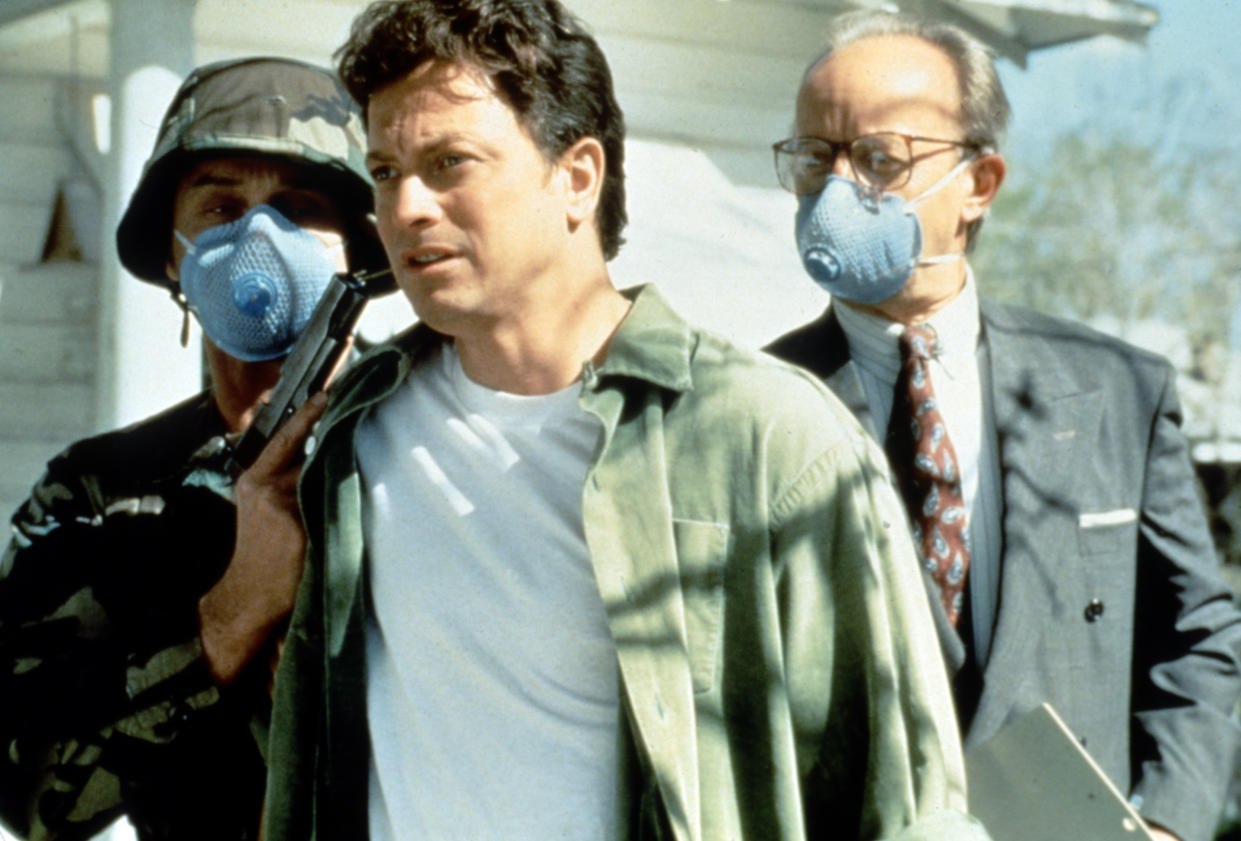
Stephen King’s classic 1978 novel The Stand spins a yarn so big, only the small screen can contain it. Depending on which version you read, the post-apocalyptic saga spans between 800 to 1,153 pages, and still stands as King’s longest book. (It ranks just behind, at 1,138 pages.) While various writers and directors — including George A. Romero and Ben Affleck — have tried to create a viable feature film version, the expansive canvas of The Stand is best suited for serialized television. Chronicling the collapse of society following a near-extinction level plague, the epic story pits two groups of survivors against each other as they seek to rebuild civilization. One side follows the example of saintly Mother Abigail, while the other swear allegiance to King’s signature nemesis, Randall Flagg.
Given its epic scope and super-sized cast, it’s no wonder that the next stop for The Stand is CBS All-Access, which recently announced a 10-hour adaptation overseen by Josh Boone and Ben Cavell and starring Alexander Skarsgård, Amber Heard, Whoopi Goldberg and James Marsden. King himself will pen a new ending for the series, which is far from the first time he’s tinkered with The Stand. Twenty-five years ago, the author adapted his doorstop of a novel into the six-hour network miniseries, Stephen King’s The Stand, which became a smash success when it aired on ABC over four nights in May 1994.
Featuring an all-star ensemble that included Gary Sinise, Molly Ringwald, Ruby Dee and Rob Lowe, the miniseries was directed by frequent King collaborator Mick Garris, whose other credits include Sleepwalkers, Riding the Bullet and the miniseries version of The Shining. “We broke the rules right in the title sequence,” Garris tells Yahoo Entertainment about the ’94 Stand, set to arrive on Blu-ray in a restored version on Sept. 24. “One of the first rules back then was no open eyes on corpses. But during the title sequence, we move right in on a dead woman with her eyes wide open! That was kind of our middle finger to ABC standards and practices, and we got away with it because it was Stephen King.”
Garris got away with a whole lot more during production on The Stand. Here are five behind-the-scenes stories from one of the last great network TV miniseries.
Big screen stars wouldn’t stand for appearing on the small screen
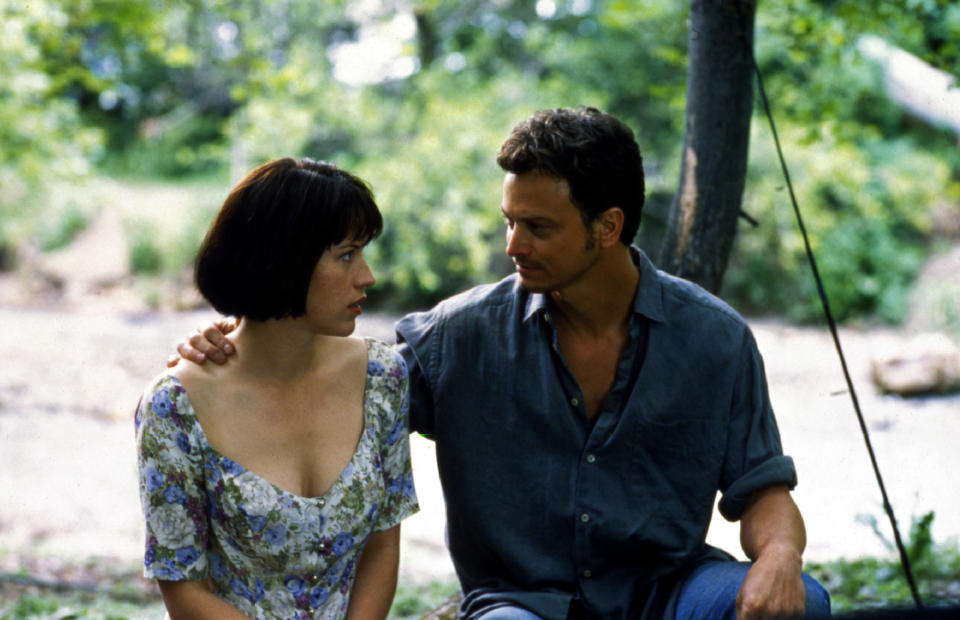
Any version of The Stand is going to carry a sizable price tag and, to ABC’s credit, the network came ready to spend. Garris remembers that ABC initially prioritized production value over star power. “They said, ‘Let’s not worry about getting names in the cast — Stephen King is our star,’” Garris recalls. Naturally, that calculus changed as the shoot date drew closer and ratings worries began to kick in. “Once pre-production began, it became, ‘You know, it would be great if we could get so-and-so!’” And not just any “so-and-so” would do; ABC hoped to pack the ensemble with some high-profile actors and actresses. There was just one problem: in the early ’90s, there was still an unofficial, but well-policed divide between movie and television stardom. “Snobbery is the word — you can use it,” Garris says, with a knowing laugh.
Stephen King’s name proved enough to attract some celebrities who might otherwise turn their nose up at television, though. Former Brat Packer Rob Lowe was an enormous fan of the author’s work and agreed to play kindly deaf mute Nick Andros. (Lowe went on to have a lucrative television career thanks to shows like The West Wing and Parks and Recreation.) And ABC worked overtime to recruit another former teen movie icon, Molly Ringwald, as Frannie Goldsmith, the young pregnant woman who represents the hopes for a post-plague generation. As to who would play her love interest — and the story’s de facto hero, Stu Redman — Garris found his leading man on the big screen in a small-scale period piece. “I went to see Of Mice and Men to see another actor; he was great, but didn’t end up in The Stand. But I saw Gary Sinise, who also wrote and directed it, and I thought, ‘This guy is a movie star! He’s Gregory Peck; he’s Gary Cooper.’”
These days, of course, actors movie freely and easily between movies and television without any career concerns. That’s best evidenced by the case of a star who got away when Garris was making The Stand. “We talked about Whoopi Goldberg, because it’s one of her favorite books. But she was in the middle of the highest point of her movie career, and there was just no way she’d be available. Now, she’s playing Mother Abigail in the new version of The Stand! So all things come full circle.”
The Lincoln Tunnel led to Pittsburgh
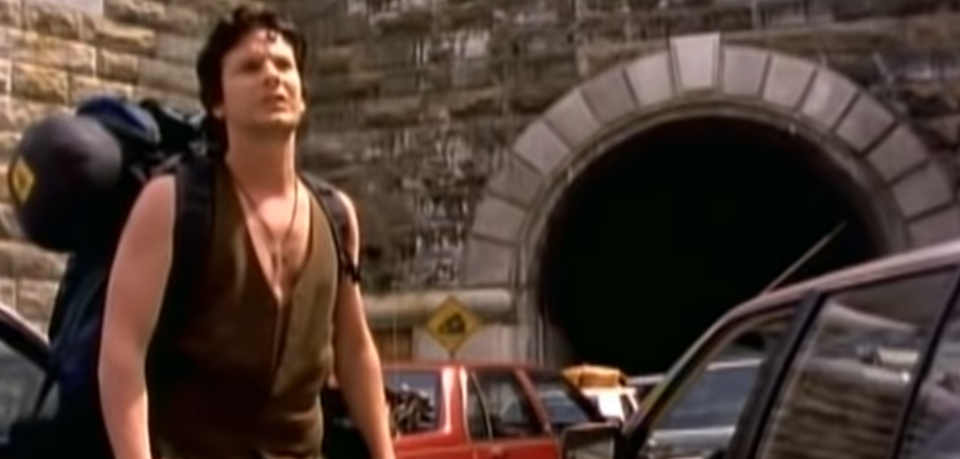
One of the novel’s standout sequences is a heart-stopping escape from New York via the Lincoln Tunnel. Sounds simple, you say? Well, just try escaping through a full dark, no stars Lincoln Tunnel overflowing with abandoned cars and dead bodies. That’s how Larry Underwood (Adam Storke) and Nadine Cross (Laura San Giacomo) have to navigate the 1.5-mile underwater passage, and Garris was tasked with making their crossing as heart-stopping as the one King described on the page. “In the book, that scene takes place in pitch-blackness. That would have been great if we were doing a five-minute radio play! My challenge was, ‘How can I shoot this and convey darkness, while still allowing the audience to see it?’”
The answer came to Garris in a flash … of headlights. “I thought that the batteries of these cars would still have a bit of life in them, so there’d be blinkers and headlights on. But they’d also be dim and die during the course of the scene, which would heighten the tension even more. And Adam did an amazing job of conveying fear; he sees even less than we do, which is normally a pretty dangerous thing to do in a movie. It was all about finding the tension through performance, as well as camera angles, lenses and lightning techniques.”
While New York City granted Garris permission to film exterior scenes at the actual Lincoln Tunnel, there was never a real possibility of them closing a major traffic artery to shoot the entire sequence. The city of Pittsburgh, on the other hand, welcomed the production with open arms and an empty tunnel. “We were allowed to block off that tunnel and fill it with as many cars as we could find,” he remembers. “In those days, before giant screens were a thing, almost everything was shot in close-ups. But we took a much more cinematic approach and did lots of wide angles, wide lenses and other things that weren’t the norm for network television.”
Oh, say can you sing?
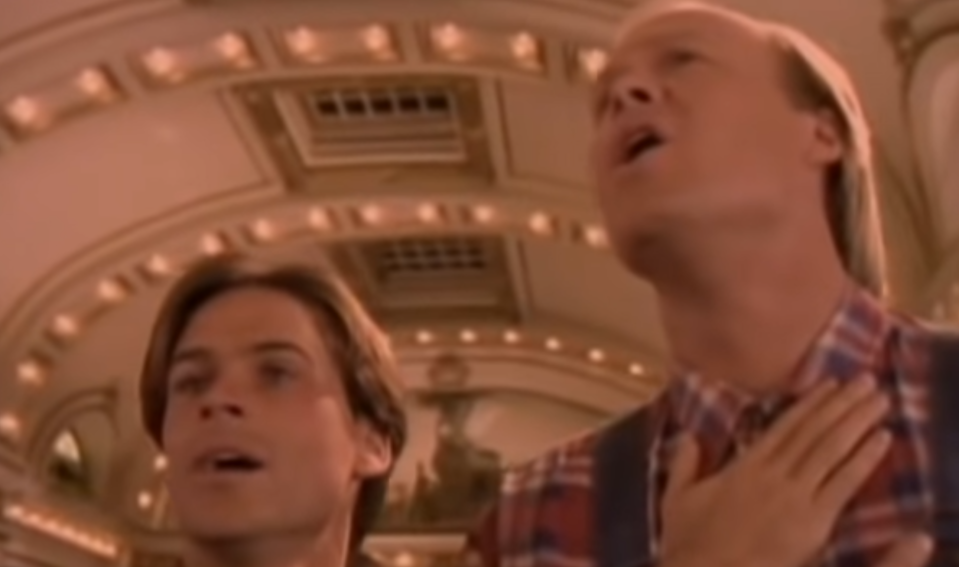
Arguably the most striking moment in Garris’s adaptation of The Stand doesn’t feature anything horrific. Midway through the six-hour runtime, the miniseries takes an extended time-out so that Stu, Fran and the rest of the Colorado-located Boulder Free Zone can sing the entirety of “The Star Spangled Banner.” It may sound sentimental, but at that point in the narrative, the sentiment is absolutely earned. “I’m very liberal in my political views, but that scene allowed me to feel — and the audience and the characters to feel — what America is all about,” the director says. “Here’s a country that’s starting over, with a chance to become a true democracy, rather than the plutocracy it seems to have become. It’s about being a patriot in the truest sense. It allows a patriotism that you don’t feel guilty about; it’s about something that unites us rather than something that separates us.”
That sequence was also one of the rare times where the show’s large cast of characters were together in the same space. Well … almost all. Garris reveals that when he originally filmed the scene, there was an actor on set who doesn’t appear in the final cut. The director originally cast Moses Gunn in the pivotal role of Judge Farris, and the Tony-nominated actor’s first big scene was singing the national anthem with the rest of the ensemble. But Garris observed on set that the 64-year-old actor wasn’t in the best of health. “He did that scene, but was so sick that he couldn’t continue.” (Gunn died in December 1993.) In his place, the director cast screen legend and civil rights activist Ossie Davis, whose equally iconic wife, Ruby Dee, was already playing Mother Abigail. “We shot Ossie singing in a different place and then cut him into the sequence. That’s the only thing that’s different than what we originally shot.”
Stephen King was ready for his close-up
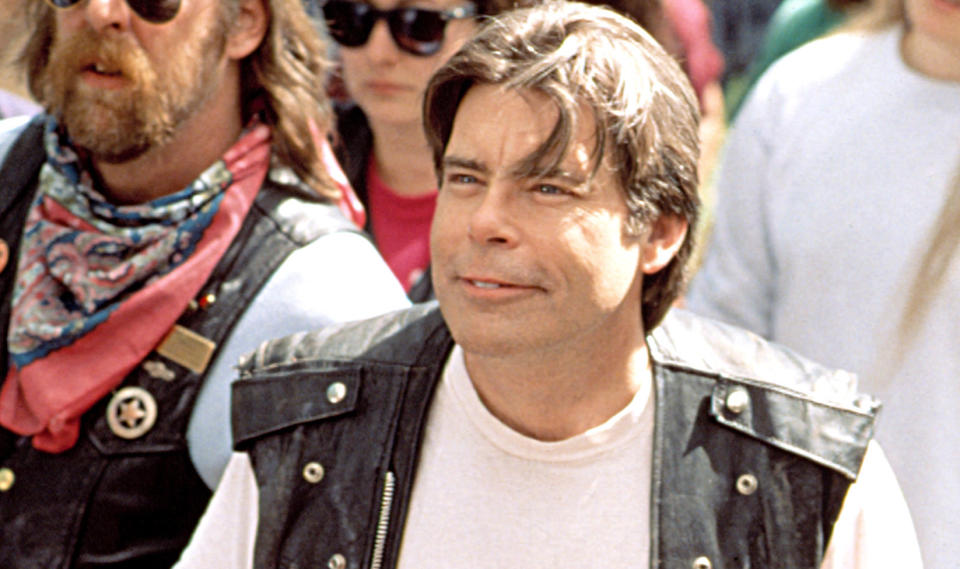
Here’s something you may not know about America’s best-loved boogeyman: he’s got the acting bug big time. “[Stephen] took theater in college,” Garris says. “He’s not just into screenwriting and novel writing, but acting as well!” The director previously cast King in a small role in Sleepwalkers, and knew that he wanted the author to have a slightly larger part in The Stand as well-meaning doofus Teddy Weizak.
Just so King wouldn’t have all the fun, Garris cast himself as Henry Dunbarton, who appears in almost all of Teddy’s scenes. “We’re sitting next to each other during the national anthem, and then in the scene in the church,” he says, with a chuckle. “He’s a little bit of a ham like most of us when given the opportunity.” And King’s acting days are far from behind him. “I just saw It Chapter Two, and as soon as I heard that voice, I was like, ‘I know who this is!’” Garris says of the author’s most recent onscreen appearance. “The whole theater went apes**t when Stephen came on. He and Bill Hader are the best things in the movie!” [Read more about King’s It cameo.]
King and Garris aren’t the only notable cameos in The Stand, though. Eagle-eyed viewers will also spot Sam Raimi, John Landis, Ed Harris and Kathy Bates in small roles. Garris is particular proud of Bates’s uncredited appearance as radio announcer Rae Flowers, since she was fresh off her Oscar victory for another King-derived production, Misery. “We shot that whole sequence with Kathy in four hours. In the book, her character was written as a man, but we decided that it would be a great opportunity to get a wonderful performance from here. And she just killed it.”
Garris would love a do-over on the ending
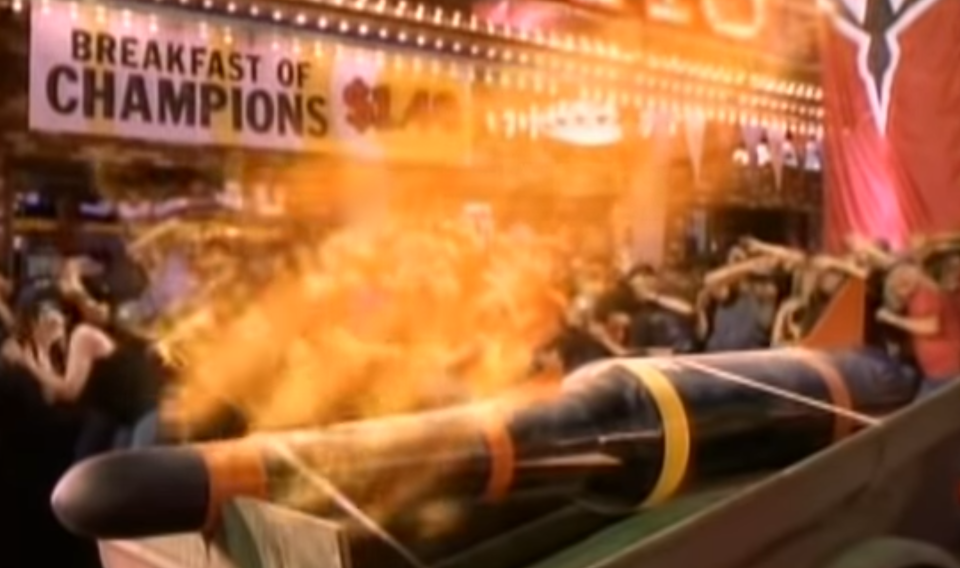
Considering its massive ratings and six Emmy nominations — including Outstanding Miniseries — Garris has every reason to feel satisfied with The Stand. Still, if he’s being honest, he wouldn’t have minded if King had written a new ending for him like he’s about to do for Josh Boone’s upcoming CBS All-Access version. Not that there’s any real rivalry there. “A lot of people expect filmmakers to be competitive, but I’m excited about Josh’s version,” Garris says. “I know he’s a huge fan of King and a very talented guy. Josh and I have gotten together a couple of times over lunch, and they’re doing new things, whereas the whole point of our show was to do the book. We wanted to be as truthful to what King had created as possible, and who better to adapt it than Stephen himself?”
But being truthful to King’s text meant that Garris had to visualize the literal deus ex machina that occurs during the novel’s climax. And he’s the first to admit that his digital “Hand of God” looks less than divine. “We were very limited in our visual effects,” he says by way of mea culpa. “CGI was very expensive and not very sophisticated at the time. The way we had to do the Hand of God was quite grimacing. It was hard for me to watch in 1994, so if it was embarrassing then, it’s more embarrassing now! We were able to work on a vast scale, which was both a blessing and a curse. For the viewers, hopefully it’s a blessing.”
The 25th anniversary edition of Stephen King’s The Stand will be available on Blu-ray starting Sept. 24 from Amazon and Walmart.


